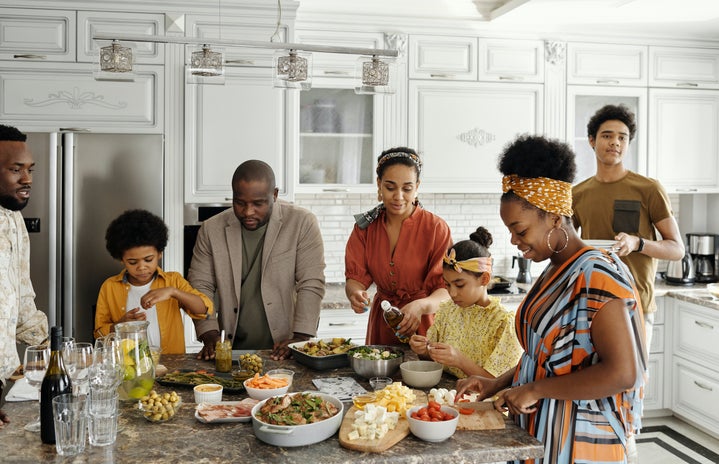It’s almost that time of the year! Thanksgiving, and then Christm… Kwanzaa!! Many people are not familiar with how other cultures celebrate their way ” Christmas.” Although we haven’t always celebrated Kwanzaa. It wasn’t until two years ago that we stopped celebrating certain holidays, became more mentally and body-conscious, and decided to find ways to connect to our roots more. We thought that celebrating Kwanzaa would be the perfect way to learn more about our culture and make ” Christmas” more about spending time with family instead of stressing about gift-giving. Since then, we’ve never looked back and are super happy with our decision as a family. Maulana Karenga created Kwanzaa in 1966 as a way for African Americans to reconnect with their heritage and culture. It is observed from December 26 to January 1, with each day focusing on one of seven core values, or Nguzo Saba. Each day, a candle is lit, and on the last day, gifts are exchanged. Because Kwanzaa is a cultural rather than a religious holiday, it can be observed alongside Christmas or Hanukkah, or on its own; however, Karenga wished for it to be observed instead of Christmas and Hanukkah, as he believed these holidays were simply symbols of America’s dominant cultures.
How To Decorate For Kwanzaa.
Mazao — A bowl of fruit or crops that represents the community’s productivity.
Kinara is a candle holder with seven prongs.
Mishumaa Saba — the seven candles that represent Kwanzaa’s seven core principles. Three candles on the left represent struggle; three on the right represent hope; and one in the center represents the African American people or those who trace their ancestry to Africa.
Muhindi means “corn ears.” Place one ear of corn for each child; if there are no children, place two ears to represent the community’s children.
Zawadi — a variety of children’s gifts.
Kikombe cha Umoja — is a cup that symbolizes family and community unity.
Kwanzaa Greetings.
Beginning on December 26, greet everyone with “Habari Gani,” a standard Swahili greeting that means “what’s the news?” If someone greets you, respond with the day’s principle (Nguzo Saba): [3]
“Umoja” — Unity — December 26
“Kujichagulia” — Self-determination — December 27
“Ujima” — “Ujima” — “Ujima” — “Ujima” — “Ujima
“Ujamaa” — Cooperative economics — December 29
“Nia” — Purpose — December 30
“Kuumba” — Creativity — December 31
Faith — “Imani” — January 1st.
Non-African-Americans are also welcome to join in on the greetings. “Joyous Kwanzaa” is the traditional greeting for them.
Celebrating Kwanzaa has made me realize how important it is for one to connect to their ancestral roots, as this is so much more fun for us, and teaches us the meaning on Family, Love, and Unity.


